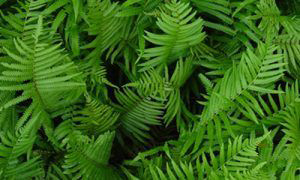The calaguala plant is a fern native to America and was highly valued by the Mayan people long before the arrival of the Spaniards. From the 17th century onwards, it has been used in Europe, where it had been supposed to have many medicinal uses, including healing syphilis. We know its actual healing properties, which are listed below.
- Calaguala is a popular South American ingredient with a bevy of plant chemicals. Calaguala is known to contain flavonoids, alkaloids, and several fatty acids
- The Rhizome (Root) Contains the Most Adenosine the Bioactive Compound of Calaguala Responsible for its Therapeutic Properties, Effects Within 60 Days

Calaguala Plant Scientific Facts
- French: Polypode calaguala.
- Spanish: Calaguala.
- Environment: Common in Central and South America, this plant does not grow in Europe. Calaguala grows in moist and shady areas, especially as a parasite plant, on the trunk of some trees.
- Description: Fern of the Polypodiaceae family, with coriaceous oval-shaped leaves. The rhizome (set of underground stems) is thick and is covered with yellowish or reddish scales.
- Parts of the plant used medicinally: The rhizome and the root.
Healing Properties and Indications

The most outstanding uses of the rhizome and the root of calaguala are:
- Sudorific: It increases the production of sweat.
- Uricosuric diuretic: It promotes the elimination of uric acid.
- Depurative.
- Stimulant and regulator of cell immunity: Its most important application is for skin rashes and autoimmune ailments (rheumatic arthritis, cholagenosis, psoriasis, dermatogis, etc.). At present, research is being conducted on this issue.
How to use Calaguala
- Decoction with 30-40g of ground root and rhizome per liter of water. Boil for 10 minutes. Drink two or three cups daily.
Similar Plants

Polypody Species: Polypodium leucatomos Poir is a fern similar to calaguala, whose extract, called anapsos, is part of the composition of several medicines used for psoriasis and atopic dermatitis. In Mexico, a similar species, Polypodium feuillei Bertero, has the same properties as calaguala.
Tepezcohuite: In Mexico, another plant is also beneficial against skin afflictions, known as Tepezcohuite (Mimosa tenuiflora L.). It is a powerful skin and wound healer that activates tissue regeneration. Moreover, it has antibiotic and fungicidal properties.
The pharmaceutical industry prepares creams and shampoos with the extract of this bark, which is externally used for skin burns and sores and hair and skin beauty.
Frequently Asked Question
What are the primary conditions the calaguala plant has traditionally treated?
Calaguala’s historical use centers around skin conditions, particularly those with an inflammatory component. This includes:
Psoriasis: Reducing plaques, redness, and scaling.
Atopic dermatitis (eczema): Improving itchiness and inflammation.
Vitiligo: Potentially helping to repigment affected skin areas.
Are there studies backing up the calaguala plant’s effectiveness in these conditions?
Yes, research exists, although more is always needed. Here’s a summary:
Psoriasis: Some studies support the calaguala plant’s benefits in reducing psoriasis severity.
Other Skin Conditions: Research suggests potential benefits for vitiligo and eczema, but findings are inconclusive.
How does the calaguala plant work to improve health?
Scientists believe calaguala has several mechanisms in the body:
Antioxidant: It possesses antioxidants that protect cells from damage caused by free radicals.
Immunomodulatory: It can influence the functioning of the immune system, which plays a role in inflammatory skin conditions.
Anti-inflammatory: Calaguala may reduce inflammation, a critical factor in many skin conditions.
Is calaguala safe for everyone?
While generally considered safe, these points are essential:
Pregnancy and Breastfeeding: Avoid use due to lack of safety data.
Medication Interactions: Calaguala can potentially interact with certain medications, especially those affecting the immune system. Consult a healthcare professional before use.
Long-term use: Safety data for extended Calaguala use is limited.
May you tell me where I can locate trustworthy sources of calaguala?
Here’s what to keep in mind:
Reputable Suppliers: Choose suppliers with a track record of quality control and product testing.
Standardized Extracts: Look for products containing standardized extracts to ensure you get a consistent dose of active ingredients.
Doctor Consultation: See your physician before taking calaguala, particularly if you already have any preexisting health issues.
DISCLAIMER: All content on this website is presented solely for educational and informational objectives. It would be best to not rely on the information provided as a replacement for advice, diagnosis, or treatment from a qualified medical expert. If you are pregnant, nursing, or have any preexisting medical concerns, you should talk to your doctor before using any herbal or natural medicines.
REFERENCES
- George D. Pamplona-Roger, M.D. “Encyclopedia of Medicinal Plants.” George D. Pamplona-Roger, M.D. Encyclopedia of Medicinal Plants. Ed. Francesc X. Gelabert. vols. 2 San Fernando de Henares: Editorial Safeliz, 2000. 724. Print. [calaguala plant]
- PubMed: https://pubmed.ncbi.nlm.nih.gov/
- Google Scholar: https://scholar.google.com/
- National Institutes of Health (NIH): https://www.nih.gov/
- Mayo Clinic: https://www.mayoclinic.org/
- Reyes, F. J., et al. (1996). Effects of Calaguala and an active principle, adenosine, on platelet-activating factor. International Journal of Immunopharmacology, 18(2), 111-116. https://pubmed.ncbi.nlm.nih.gov/1438589/
Last update on 2024-04-20 / Affiliate links / Images from Amazon Product Advertising API






